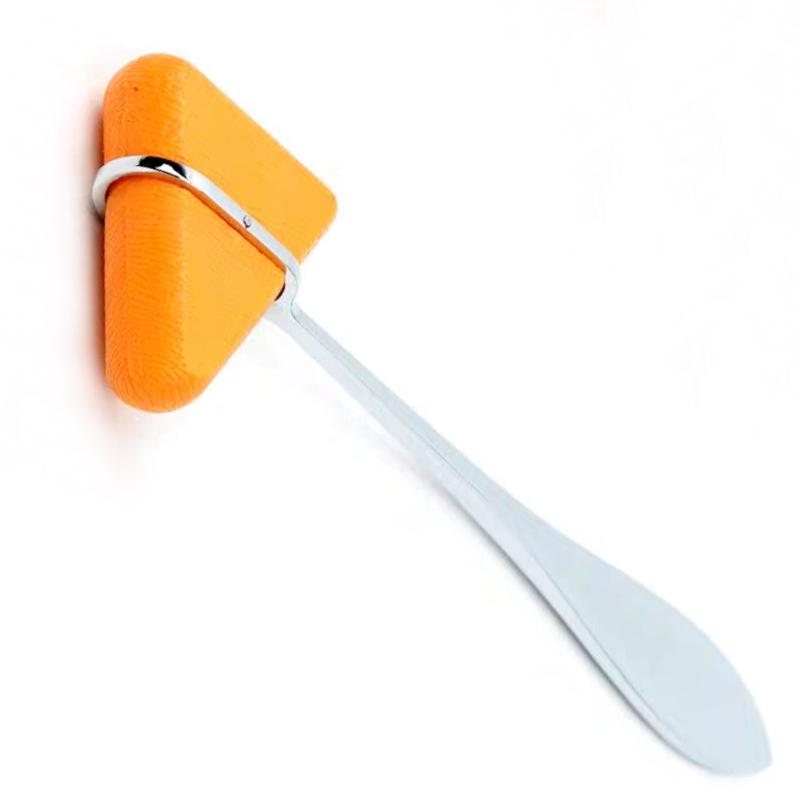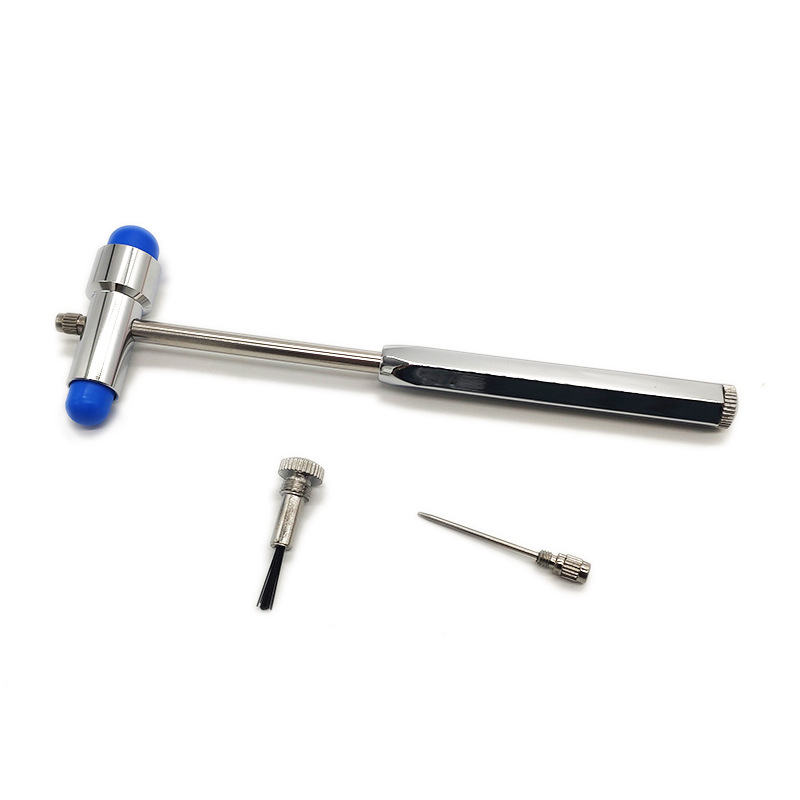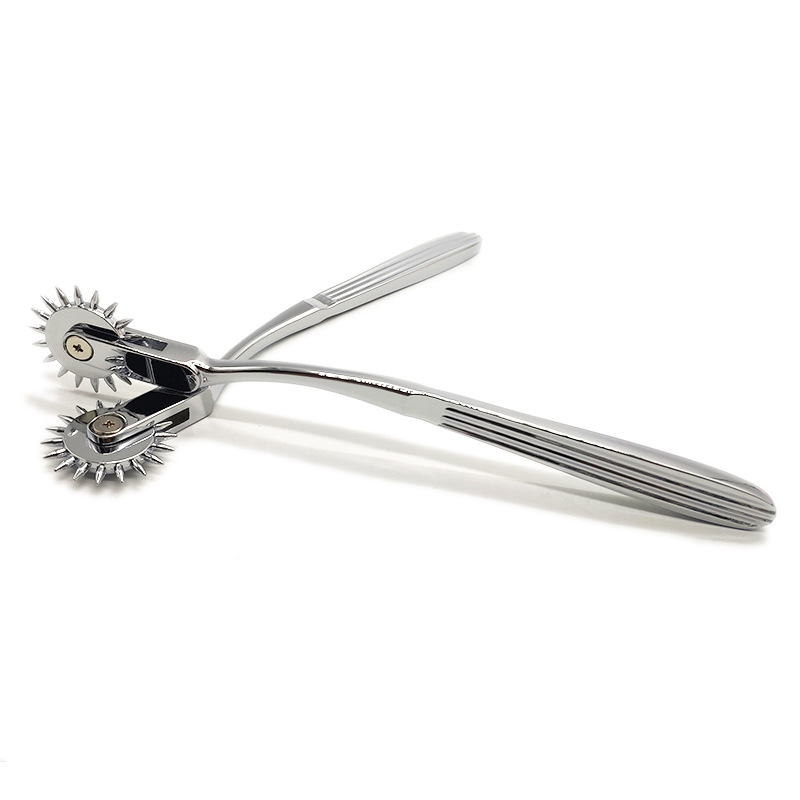Percussion Hammer - Leis
Leis stands at the forefront of the global medical equipment supply chain, specializing in the design, development, and export of percussion hammers worldwide. As a leading B-end company, Leis is steadfast in its commitment to delivering exceptional quality through a diverse range of products that cater to the needs of healthcare professionals and institutions alike. With a focus on medical reflex hammer and percussion hammer medical tools, Leis harnesses cutting-edge technology to produce reliable devices essential for neurological and physical examinations.
Among Leis’s distinguished offerings are the Triangle Medical Taylor Percussion Hammer, ideal for detecting abnormalities in the peripheral nervous system, and the Oval Multifunctional Reflex Percussion Hammer, known for its integrated Babinski-tip and dual-mallet Buck percussor. Additionally, the Wartenburg Pinwheel Gear Roller Rolling Reflex Hammer is crafted from durable zinc alloy to ensure effective elicitation of sensory responses.
Leis's adherence to the ISO13485 quality management system and CE certification underscores its unwavering dedication to quality. Through efficient communication and an experienced engineering team, Leis fosters long-lasting partnerships with clients by providing innovative solutions at competitive prices. In doing so, Leis continues to redefine standards in the medical device industry, ensuring optimal satisfaction across a global clientele.
Among Leis’s distinguished offerings are the Triangle Medical Taylor Percussion Hammer, ideal for detecting abnormalities in the peripheral nervous system, and the Oval Multifunctional Reflex Percussion Hammer, known for its integrated Babinski-tip and dual-mallet Buck percussor. Additionally, the Wartenburg Pinwheel Gear Roller Rolling Reflex Hammer is crafted from durable zinc alloy to ensure effective elicitation of sensory responses.
Leis's adherence to the ISO13485 quality management system and CE certification underscores its unwavering dedication to quality. Through efficient communication and an experienced engineering team, Leis fosters long-lasting partnerships with clients by providing innovative solutions at competitive prices. In doing so, Leis continues to redefine standards in the medical device industry, ensuring optimal satisfaction across a global clientele.
-

Triangle Medical Taylor Percussion Hammer
●Triangle shape medical Taylor Percussion hammer
●In neurological physical examination to detect abnormality of peripheral nervous system
●To test tendon reflexes
●For chest percussion
●Black/green/orange/blue 4 different colors available.
-

Oval Multifunctional Reflex Percussion Hammer
●Oval Multifunctional Reflex percussion hammer
●Integrated Babinski-tip
●Dual-mallet Buck percussor
●Built-in brush
●Black/green/orange/blue 4 different colors available.
-

Wartenburg Pinwheel Gear Roller Rolling Reflex Hammer
- Wartenburg Pinwheel Gear Roller Rolling Reflex Hammer
- Gear roller rollling
- to elicit cutaneous sensory and pain perception responses
- Zinc alloy material.
Percussion Hammer FAQ
What is a percussion hammer used for?▾
In the world of medicine, precision and accuracy are vital, particularly when diagnosing neurological conditions. A crucial tool in this realm is the percussion hammer, commonly known as the medical reflex hammer. This unassuming instrument plays a pivotal role in neurological examinations, providing healthcare professionals with insights into the health of a patient's nervous system.
Understanding the Medical Reflex Hammer
The medical reflex hammer is a specialized instrument used primarily to test deep tendon reflexes. Its purpose is to elicit a response from the nervous system, which can then be assessed to determine potential abnormalities or confirm a healthy function. While it may appear simplistic at first glance, its design is meticulously crafted for precision. Typically, it consists of a handle and a rubber head that can vary in shape, such as triangular or circular, each designed for specific reflex testing.
Applications in Neurological Assessments
When performing a neurological assessment, a healthcare professional uses the medical reflex hammer to tap gently on tendons associated with specific muscles. This action stimulates a reflex arc—an involuntary response transmitted through the nervous system. Common sites for these tests include the knee (patellar tendon reflex), ankle (Achilles tendon reflex), and elbow (triceps tendon reflex). The reaction, such as a knee-jerk, helps physicians evaluate the integrity of the spinal cord and peripheral nervous pathways.
A key aspect of using the medical reflex hammer is its ability to assess the central and peripheral nervous system. By observing the speed, strength, and symmetry of reflexes, medical professionals can gather valuable information. Abnormal reflex responses can indicate neurological disorders such as neuropathy, multiple sclerosis, or spinal cord injuries. The reflex hammer, therefore, serves as an essential diagnostic tool for detecting such conditions early on, facilitating timely intervention and management.
The Role of Reflex Hammers in Medical Training
The medical reflex hammer's role extends beyond clinical practice; it is quintessential in medical education. Medical students and trainees use this instrument to learn about the nervous system's function and acquire hands-on skills in physical examination techniques. Practicing with a reflex hammer allows students to develop a keen understanding of normal versus abnormal reflex responses, contributing to their overall proficiency in patient assessments.
During training, learners are taught the importance of correct technique and positioning when using a reflex hammer. This includes understanding the appropriate amount of force to elicit a reflex without causing discomfort to the patient. Proper technique ensures that the results are reliable and can be used confidently to draw conclusions about a patient’s neurological health.
Conclusion
The medical reflex hammer, though simple in appearance, is indispensable in the field of neurology. Its ability to provide immediate feedback on the functioning of the nervous system makes it a powerful tool in both diagnostic and educational settings. By aiding in the evaluation of deep tendon reflexes, the reflex hammer ensures that medical professionals can accurately assess, diagnose, and ultimately improve patient care. Understanding its use and significance is fundamental for anyone involved in health care, from seasoned practitioners to budding medical students embarking on their journey into the medical field.
Understanding the Medical Reflex Hammer
The medical reflex hammer is a specialized instrument used primarily to test deep tendon reflexes. Its purpose is to elicit a response from the nervous system, which can then be assessed to determine potential abnormalities or confirm a healthy function. While it may appear simplistic at first glance, its design is meticulously crafted for precision. Typically, it consists of a handle and a rubber head that can vary in shape, such as triangular or circular, each designed for specific reflex testing.
Applications in Neurological Assessments
When performing a neurological assessment, a healthcare professional uses the medical reflex hammer to tap gently on tendons associated with specific muscles. This action stimulates a reflex arc—an involuntary response transmitted through the nervous system. Common sites for these tests include the knee (patellar tendon reflex), ankle (Achilles tendon reflex), and elbow (triceps tendon reflex). The reaction, such as a knee-jerk, helps physicians evaluate the integrity of the spinal cord and peripheral nervous pathways.
A key aspect of using the medical reflex hammer is its ability to assess the central and peripheral nervous system. By observing the speed, strength, and symmetry of reflexes, medical professionals can gather valuable information. Abnormal reflex responses can indicate neurological disorders such as neuropathy, multiple sclerosis, or spinal cord injuries. The reflex hammer, therefore, serves as an essential diagnostic tool for detecting such conditions early on, facilitating timely intervention and management.
The Role of Reflex Hammers in Medical Training
The medical reflex hammer's role extends beyond clinical practice; it is quintessential in medical education. Medical students and trainees use this instrument to learn about the nervous system's function and acquire hands-on skills in physical examination techniques. Practicing with a reflex hammer allows students to develop a keen understanding of normal versus abnormal reflex responses, contributing to their overall proficiency in patient assessments.
During training, learners are taught the importance of correct technique and positioning when using a reflex hammer. This includes understanding the appropriate amount of force to elicit a reflex without causing discomfort to the patient. Proper technique ensures that the results are reliable and can be used confidently to draw conclusions about a patient’s neurological health.
Conclusion
The medical reflex hammer, though simple in appearance, is indispensable in the field of neurology. Its ability to provide immediate feedback on the functioning of the nervous system makes it a powerful tool in both diagnostic and educational settings. By aiding in the evaluation of deep tendon reflexes, the reflex hammer ensures that medical professionals can accurately assess, diagnose, and ultimately improve patient care. Understanding its use and significance is fundamental for anyone involved in health care, from seasoned practitioners to budding medical students embarking on their journey into the medical field.
What does a percussion hammer test?▾
Understanding the Percussion Hammer Test
The percussion hammer test, commonly used in medical and engineering fields, serves as a crucial diagnostic tool. Designed to evaluate reflexes and structural integrity, this test plays an essential role in both neurological assessments and material inspections. By identifying potential abnormalities or weaknesses, the percussion hammer test aids professionals in making informed decisions regarding treatment or maintenance.
Medical Applications of the Percussion Hammer Test
In the medical sphere, the percussion hammer test is integral to neurological examinations. The tool, often referred to as a reflex hammer, helps practitioners assess the deep tendon reflexes of patients, which are critical indicators of nervous system function. When a healthcare provider taps a tendon with the hammer, it triggers a reflex action in the muscle, allowing the practitioner to evaluate the responsiveness and condition of the patient’s nervous system.
Abnormal reflex responses can suggest a range of neurological issues, from peripheral neuropathy to central nervous system disorders. By discerning these abnormalities early, medical professionals can initiate further diagnostic testing or therapeutic interventions. Various techniques, such as tapping specific tendons and observing muscle contractions, allow clinicians to pinpoint particular concerns, demonstrating the percussion hammer's value in comprehensive neurological assessments.
Engineering and Construction Use of the Percussion Hammer Test
Beyond the medical field, the percussion hammer test is also prevalent in engineering and construction. In this context, the tool is used to determine the integrity of materials, such as concrete, by detecting voids, cracks, or inconsistencies within structures. By striking a surface with the hammer, inspectors can listen for distinct sounds that indicate potential structural weaknesses.
The test is non-destructive, making it a valuable method for ongoing maintenance and inspection of critical infrastructure. In industries where safety and longevity are paramount, this test provides a quick and efficient way to ensure that materials are sound and fit for purpose. The detection of anomalies through sound variations allows engineers to address issues before they escalate, thus preventing costly repairs or catastrophic failures.
The Role of the Percussion Hammer Supplier
Ensuring the reliability and accuracy of percussion hammers is vital. Suppliers play a pivotal role in providing high-quality instruments that meet the stringent demands of both medical and engineering applications. A reputable percussion hammer supplier ensures their products are designed with precision, using durable materials that guarantee longevity and consistent performance.
In the medical field, a trustworthy supplier provides hammers with specific features such as weighted heads and ergonomic handles, designed to enhance the accuracy of reflex testing. For engineering purposes, suppliers offer hammers that can withstand the rigors of fieldwork, ensuring that they deliver clear acoustic feedback necessary for identifying structural issues.
Conclusion
The percussion hammer test, whether applied in medical or engineering contexts, is indispensable for diagnosing issues efficiently and effectively. Its ability to uncover hidden problems through simple, yet precise actions underscores the importance of this tool in maintaining health and safety standards. The reliability of these tests significantly depends on the quality of percussion hammers, emphasizing the crucial role of suppliers in delivering tools that professionals can trust. Whether safeguarding human health or structural integrity, the percussion hammer test remains a cornerstone in diagnostic procedures.
The percussion hammer test, commonly used in medical and engineering fields, serves as a crucial diagnostic tool. Designed to evaluate reflexes and structural integrity, this test plays an essential role in both neurological assessments and material inspections. By identifying potential abnormalities or weaknesses, the percussion hammer test aids professionals in making informed decisions regarding treatment or maintenance.
Medical Applications of the Percussion Hammer Test
In the medical sphere, the percussion hammer test is integral to neurological examinations. The tool, often referred to as a reflex hammer, helps practitioners assess the deep tendon reflexes of patients, which are critical indicators of nervous system function. When a healthcare provider taps a tendon with the hammer, it triggers a reflex action in the muscle, allowing the practitioner to evaluate the responsiveness and condition of the patient’s nervous system.
Abnormal reflex responses can suggest a range of neurological issues, from peripheral neuropathy to central nervous system disorders. By discerning these abnormalities early, medical professionals can initiate further diagnostic testing or therapeutic interventions. Various techniques, such as tapping specific tendons and observing muscle contractions, allow clinicians to pinpoint particular concerns, demonstrating the percussion hammer's value in comprehensive neurological assessments.
Engineering and Construction Use of the Percussion Hammer Test
Beyond the medical field, the percussion hammer test is also prevalent in engineering and construction. In this context, the tool is used to determine the integrity of materials, such as concrete, by detecting voids, cracks, or inconsistencies within structures. By striking a surface with the hammer, inspectors can listen for distinct sounds that indicate potential structural weaknesses.
The test is non-destructive, making it a valuable method for ongoing maintenance and inspection of critical infrastructure. In industries where safety and longevity are paramount, this test provides a quick and efficient way to ensure that materials are sound and fit for purpose. The detection of anomalies through sound variations allows engineers to address issues before they escalate, thus preventing costly repairs or catastrophic failures.
The Role of the Percussion Hammer Supplier
Ensuring the reliability and accuracy of percussion hammers is vital. Suppliers play a pivotal role in providing high-quality instruments that meet the stringent demands of both medical and engineering applications. A reputable percussion hammer supplier ensures their products are designed with precision, using durable materials that guarantee longevity and consistent performance.
In the medical field, a trustworthy supplier provides hammers with specific features such as weighted heads and ergonomic handles, designed to enhance the accuracy of reflex testing. For engineering purposes, suppliers offer hammers that can withstand the rigors of fieldwork, ensuring that they deliver clear acoustic feedback necessary for identifying structural issues.
Conclusion
The percussion hammer test, whether applied in medical or engineering contexts, is indispensable for diagnosing issues efficiently and effectively. Its ability to uncover hidden problems through simple, yet precise actions underscores the importance of this tool in maintaining health and safety standards. The reliability of these tests significantly depends on the quality of percussion hammers, emphasizing the crucial role of suppliers in delivering tools that professionals can trust. Whether safeguarding human health or structural integrity, the percussion hammer test remains a cornerstone in diagnostic procedures.
